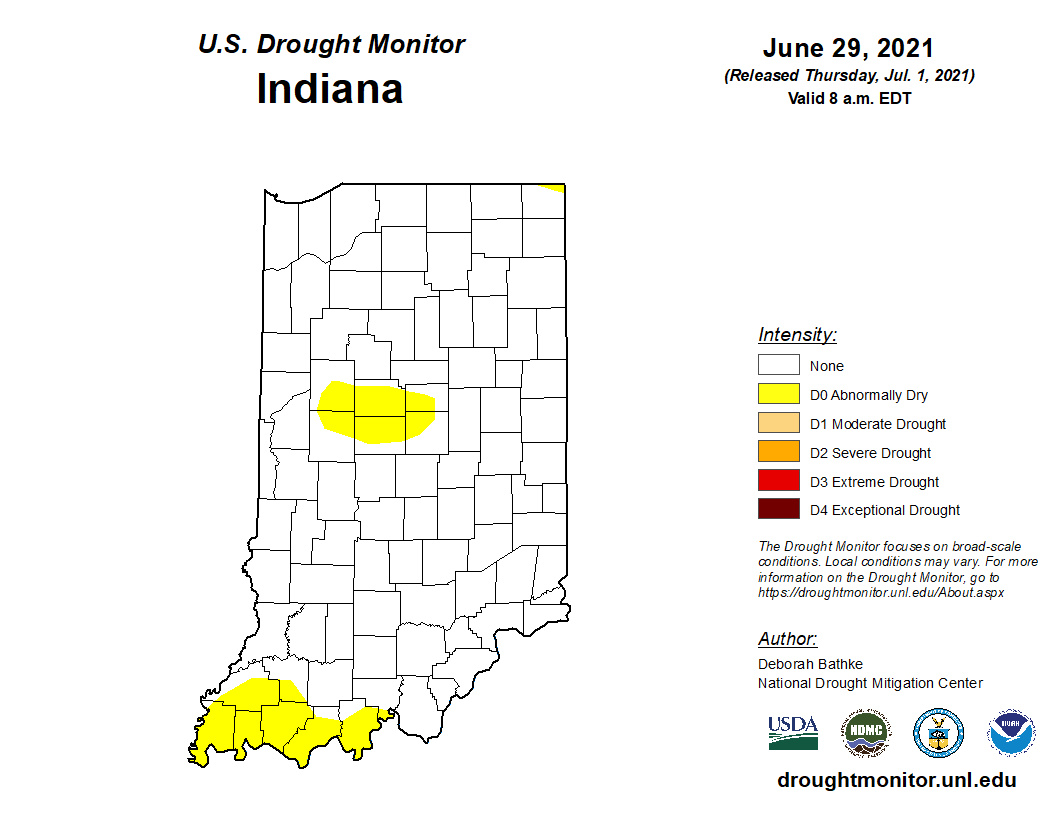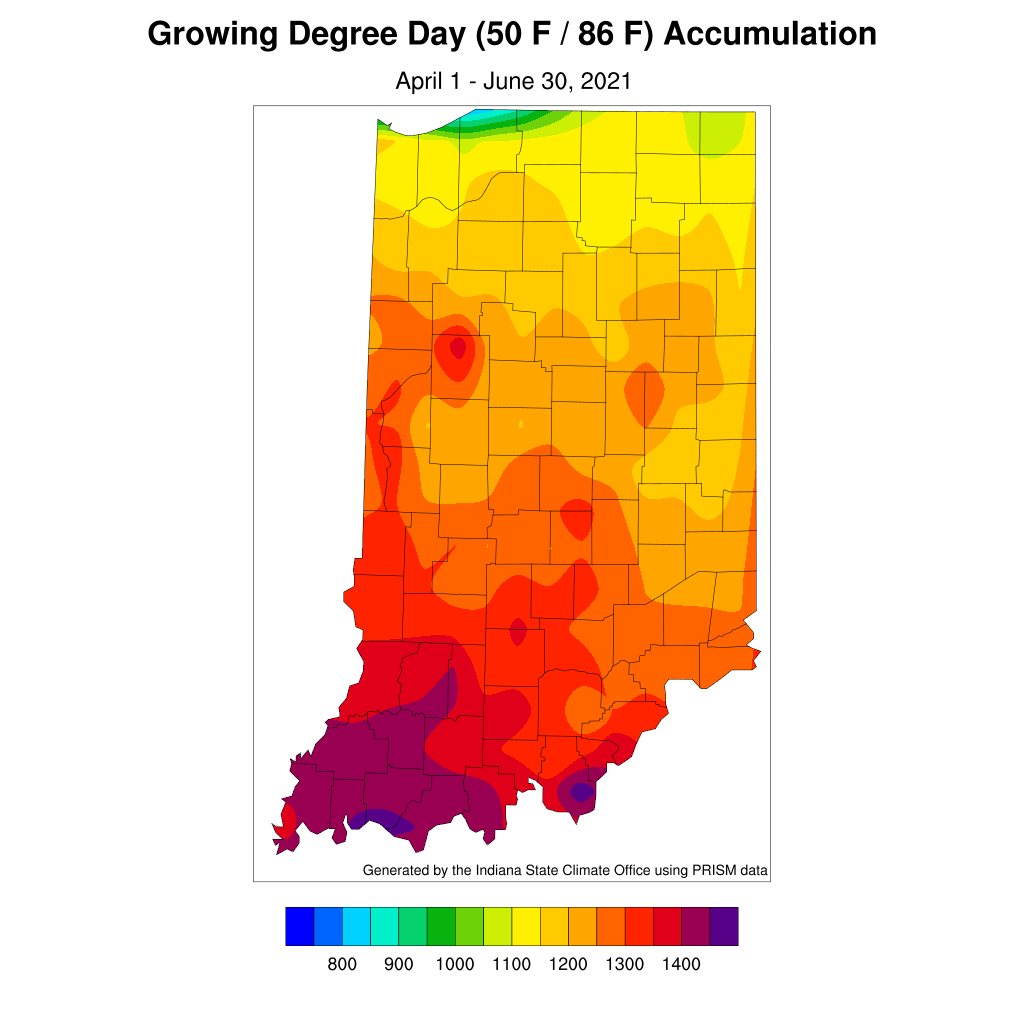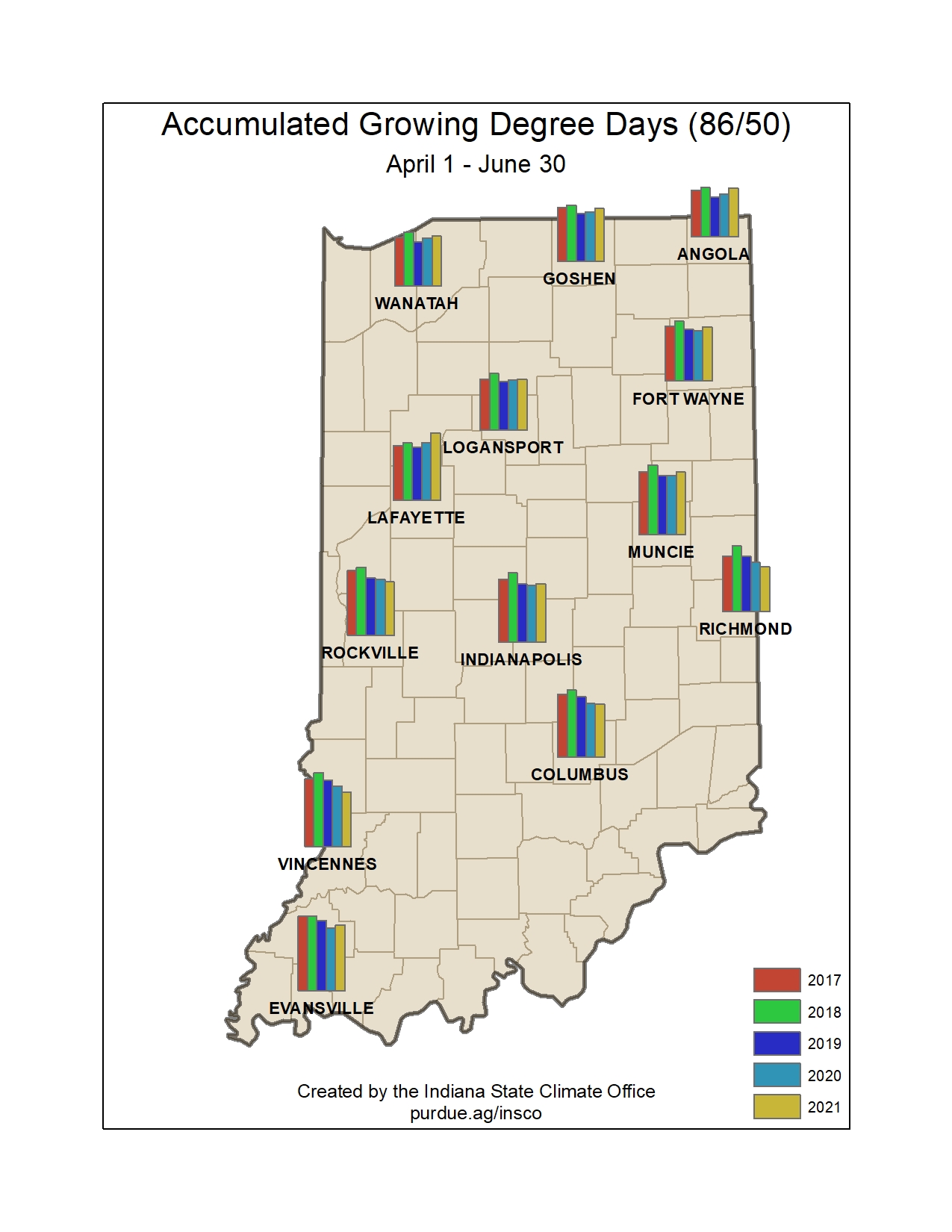As we welcome July, Indiana seems to be in a very wet phase. Or, at least part of the state has been. The jet stream – a narrow band of fast-flowing air near the altitudes where commercial jets fly – naturally meanders in a north-south-north ribbon around the hemispheres. Typically, these “ribbons” also shift eastward as they are meandering. However, recently that eastward shift has seemed to stall more than usual, causing hot dry conditions in the western US while pulling up moist air from the Gulf of Mexico into the eastern half of the US. Storm systems track along with the location of the jet stream, so any slight stalling in its eastward migration seem to cause excess rainfall in one part of Indiana while the other part of the state stays dry. Looking over the past several months, if not into last summer, these storm tracks have seemed to favor southern Indiana, leaving northern counties getting less precipitation than normal. However, the past week or so has shifted these storm tracks to the north (Figure 1) bringing some areas 4”-6” above average rainfall, leaving the southern counties dry. This has helped to eliminate abnormally dry conditions within the northern counties, but several central and southern counties are still in abnormally dry conditions according to the US Drought Monitor (Figure 2).
Things will clear up across the state for most of the next week, and then wet conditions are expected to return by the end of next week. The July outlook issued by the national Climate Prediction Center is slightly favoring above-average temperatures and precipitation. However, how much falls and when will be driven by those storm tracks. At this time, there is a slight risk of heavy precipitation falling across Indiana from July 8-10, 2021.
With respect to temperatures, June was a relatively normal month. There were certainly periods of above normal and below normal temperatures, but when averaged over the entire month, those extremes seemed to wash out. This meant that modified growing degree day accumulations are still lagging behind average amounts in the southern part of Indiana, and are slightly ahead of average in the northern counties (Figure 3). Figure 4 shows a comparison of 2021 accumulated modified growing degree days around the state compared to recent years.






